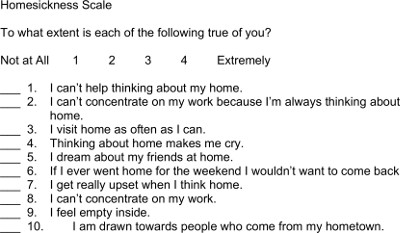Observational Research
Source: Laboratories of Gary Lewandowski, Dave Strohmetz, and Natalie Ciarocco—Monmouth University
If you want to know how someone thinks or feels, you can ask that person questions. Another approach is to observe how the person is acting or look for indicators of how they acted in the past. While observations may seem revealing, it isn’t always easy to know if they are truly accurate. For instance, you may see a person smiling and assume they are happy, when in reality they are annoyed and merely being polite.
The purpose of science is to move beyond an individual’s own views of the self because they are inherently skewed by that individual’s expectations, previous experience, personal biases, motivations, emotions, etc. While a person may have unique insight into one’s self, these insight may not accurately represent reality. Put more simply, what a person says, does not always match up well with what they actually do. For this reason, researchers should incorporate a variety of measures (e.g., asking participants to report how they feel, but also observing actual behavior) in order to more accurately capture how the person truly feels.
This video demonstrates a correlational design where researchers measure students’ homesickness in two distinct ways: (1) a homesickness scale, and (2) by observing how the student has decorated his or her dorm room.
Psychological studies often use higher sample sizes than studies in other sciences. A large number of participants helps to ensure that the population under study is better represented, i.e., the margin of error accompanied by studying human behavior is sufficiently accounted for. In this video, we demonstrate this experiment using just one participant. However, as represented in the results, we used a total of 63 participants to reach the experiment’s conclusions.
1. Define key variables.
- Create an operational definition (i.e., a clear description of exactly what a researcher means by a concept) of homesickness.
- Homesickness is the distress and functional impairment caused by an actual or anticipated separation from home and people and things you’re familiar with. (http://wellbeing.rice.edu/homesickness/)
2. Lead participant through informed consent, which is a brief description of the research a
After collecting data from 63 people, a correlation was performed between the participants’ score on the homesickness scale and the observer’s score of their room to determine if a visual inspection of a student’s room can indicate their degree of homesickness (Figure 2). The results indicate that participants who scored higher on the homesickness scale had more indicators of homesickness in their dorm room.
The results of this study are similar to another st
This correlational study shows that a person’s behavior, even something as simple as how they decorate their room, can indicate how they feel (i.e., how homesick they are).
Using observations of another person to infer that person’s feelings or thoughts can be difficult. However, research has found evidence that we can be accurate in our observational inferences. A study in Psychological Science found that observers could accurately infer personality characteristi
- Archer, J., Ireland, J., Amos, S., Broad, H., & Currid, L. Derivation of homesickness scale. British Journal of Psychology. 89 (2), 205-221. doi:10.1111/j.2044-8295.1998.tb02681.x (1998).
- Gosling, S. D., Ko, S., Mannarelli, T., & Morris, M. E. A room with a cue: Personality judgments based on offices and bedrooms. Journal of Personality and Social Psychology. 82 (3), 379-398. doi:10.1037/0022-3514.82.3.379 (2002).
- Back, M. D., Stopfer, J. M., Vazire, S., Gaddis, S., Schmukle, S. C., Egloff, B., & Gosling, S. D. Facebook profiles reflect actual personality, not self-idealization. Psychological Science. 21 (3), 372-374. doi:10.1177/0956797609360756 (2010).
Vai a...
Video da questa raccolta:

Now Playing
Observational Research
Experimental Psychology
13.0K Visualizzazioni

From Theory to Design: The Role of Creativity in Designing Experiments
Experimental Psychology
18.2K Visualizzazioni

Ethics in Psychology Research
Experimental Psychology
29.1K Visualizzazioni

Realism in Experimentation
Experimental Psychology
8.2K Visualizzazioni

Perspectives on Experimental Psychology
Experimental Psychology
5.6K Visualizzazioni

Pilot Testing
Experimental Psychology
10.3K Visualizzazioni

The Simple Experiment: Two-group Design
Experimental Psychology
72.1K Visualizzazioni

The Multi-group Experiment
Experimental Psychology
22.7K Visualizzazioni

Within-subjects Repeated-measures Design
Experimental Psychology
22.8K Visualizzazioni

The Factorial Experiment
Experimental Psychology
73.1K Visualizzazioni

Self-report vs. Behavioral Measures of Recycling
Experimental Psychology
11.8K Visualizzazioni

Reliability in Psychology Experiments
Experimental Psychology
8.4K Visualizzazioni

Placebos in Research
Experimental Psychology
11.6K Visualizzazioni

Manipulating an Independent Variable through Embodiment
Experimental Psychology
8.5K Visualizzazioni

Experimentation using a Confederate
Experimental Psychology
17.8K Visualizzazioni
